Water damage is highly stressful, whether caused by a burst pipe, flooding, heavy rainfall, etc. The consequences can be highly impactful as they lead to structural damage, mold growth, and more. The most common query that exists on the internet is: How long should you run fans after water damage?
The simple answer is: run fans for at least 24-72 hours to remove surface moisture and prevent immediate secondary damage.
However, this answer does not simplify your problem because water damage varies, and so does the time for the drying process with fans.
Let's dig into the details of fan usage according to the extent of water damage restoration.
Why Is It Important to Run Fans After Water Damage?
Long exposure to water can cause multiple issues because it can seep into the walls, flooring, furniture, and even structural components. If you run fans, it can speed up the evaporation process, help to prevent these risks, and make the water damage restoration more efficient.
If water is not dried out quickly, it can cause mold growth within 24-48 hours, weaken wooden structures, and damage drywall. It also leads to long-term odors, indoor air quality issues, and can reduce property value.
Best Equipment to Use for Drying After Water Damage
● You can use high-velocity fans or air movers at high speed.
● To extract moisture from the air, use dehumidifiers.
● HEPA air scrubbers are also useful if mold is suspected. These clean the air by removing microscopic contaminants and spores.
Factors That Affect Fan Run Time After Water Damage
The duration for which you'll need to run fans can vary. Here are a few factors that impact drying time:
Extent of Water Damage
The volume of water and the size of the affected area matter a lot. For minor spills and damp carpets in which water does not go deeply, 24-48 hours of fan runtime is needed. It applies to surface-level dampness on hard floors.
However, in case of flooded basements or major leaks, materials will be heavily saturated, and moisture will deeply penetrate walls, subflooring, and insulation; consistent drying with high-powered fans and dehumidifiers is important. Keep the fans on for at least 5 to 7 days, and sometimes even longer for severely saturated areas.
Type of Material Affected
Different materials absorb and retain moisture differently, for example:
● Porous materials like hardwood floors, drywall, carpet padding, insulation, and particleboard are highly absorbent. They soak up water deep into their core. They need up to 7 days or more to return to their pre-loss moisture content.
● Non-porous materials like concrete, tile, stone, and metal are less absorbent. Water tends to sit on their surface rather than penetrating deeply. These surfaces dried up quickly, but hidden moisture can stay there, so it also needs quality hours for drying.

Humidity Levels
Humidity in the air directly affects how much moisture can evaporate from wet surfaces. If the ambient air is humid, the air quickly becomes saturated with moisture. This high humidity slows down or stops evaporation from wet materials because the air can't hold any more water vapor.
To manage this, the U.S. Environmental Protection Agency (EPA) recommends using a hygrometer to monitor indoor relative humidity (RH).. For effective drying, the indoor humidity should ideally be maintained below 50%, and often professionals aim for 30-40% RH. If the humidity is too high, use dehumidifiers to pull moisture out of the air.
Ventilation and Air Circulation
Simply placing a fan in a room isn't enough. For perfect drying, you need to create a strategic airflow pattern using multiple fans or air movers (high-velocity fans).
For strategic placement, position air movers low to the ground, pointing at walls, floors, and other wet surfaces. They create a laminar flow that speeds up evaporation.
If you have Crawlspace Ventilation Fan, they are best for the rooms to push humid air towards the dehumidifier or out of a window. You also need to open windows and create a cross-breeze with fans to improve air exchange and speed up drying.

Ambient Temperature
Warmer air can hold more moisture vapor than cooler air. If the temperature is too hot, especially without proper ventilation and dehumidification, it can damage the place and cause material damage like warping or cracking further.
So, maintain the room temperature between 70°F and 90°F (21°C – 32°C) for water damage drying. Within this range, water molecules gain enough energy to evaporate more quickly. If the temperature is too low, evaporation will be slow and can increase drying time.
Signs That Your Space Is Dry Enough to Stop Running Fans
Wondering how to tell when it’s safe to turn off the fans? Here are signs your space is dry:
● The moisture meter reads acceptable levels (10–15% moisture content for wood).
● Surfaces feel completely dry to the touch.
● No musty smell lingers in the room.
● Humidity is below 50%.
● No signs of mold growth (black spots, odor, etc.).
Final Verdict- How Long Should You Run Fans After Water Damage?
For surface-level drying, keep the fans running for 24–72 hours. If you do not have a suitable fan, consider getting one from Abestorm.com. The complete drying and restoration process can take approximately 7 to 14 days, and severe water damage takes a few months to dry properly. If you are unsure, it’s always wise to call a professional water damage restoration team.
They have the tools and expertise to assess hidden moisture and ensure your property is truly dry, not just on the surface.
FAQs
How long after water damage does mold grow?
In 24–48 hours, mold can begin growing in damp environments, and after 72 hours, mold becomes a serious risk, especially behind walls and under floors. So, running fans immediately after water damage is essential to preventing this.
Can I turn off the fans at night while drying water damage?
No, it’s best to run fans 24/7 until the area is fully dry. Turning off fans at night slows down the evaporation process and increases the risk of mold growth, especially in humid environments.
How do I know when the area is completely dry?
Use a moisture meter to test the materials. Dry wood should read between 10% and 15% moisture content. Additionally, the room should feel dry to the touch, have no musty odor, and maintain a relative humidity below 50%.
Is it safe to stay in the house during the drying process?
Yes, in most cases, it is safe if there is clean water that caused the damage. However, for gray or black water contamination, it's safer to stay out until professionals complete sanitization and drying.



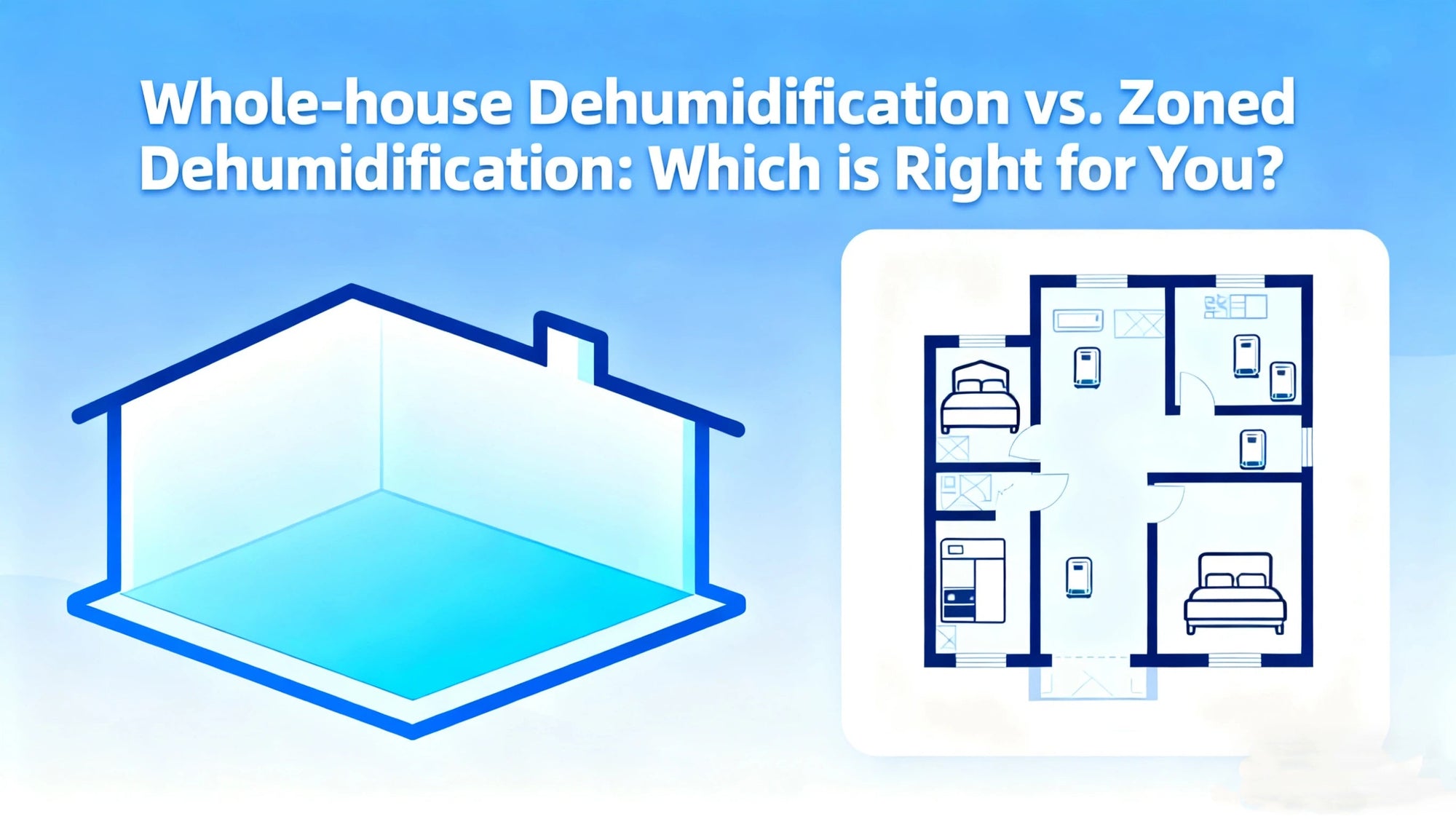
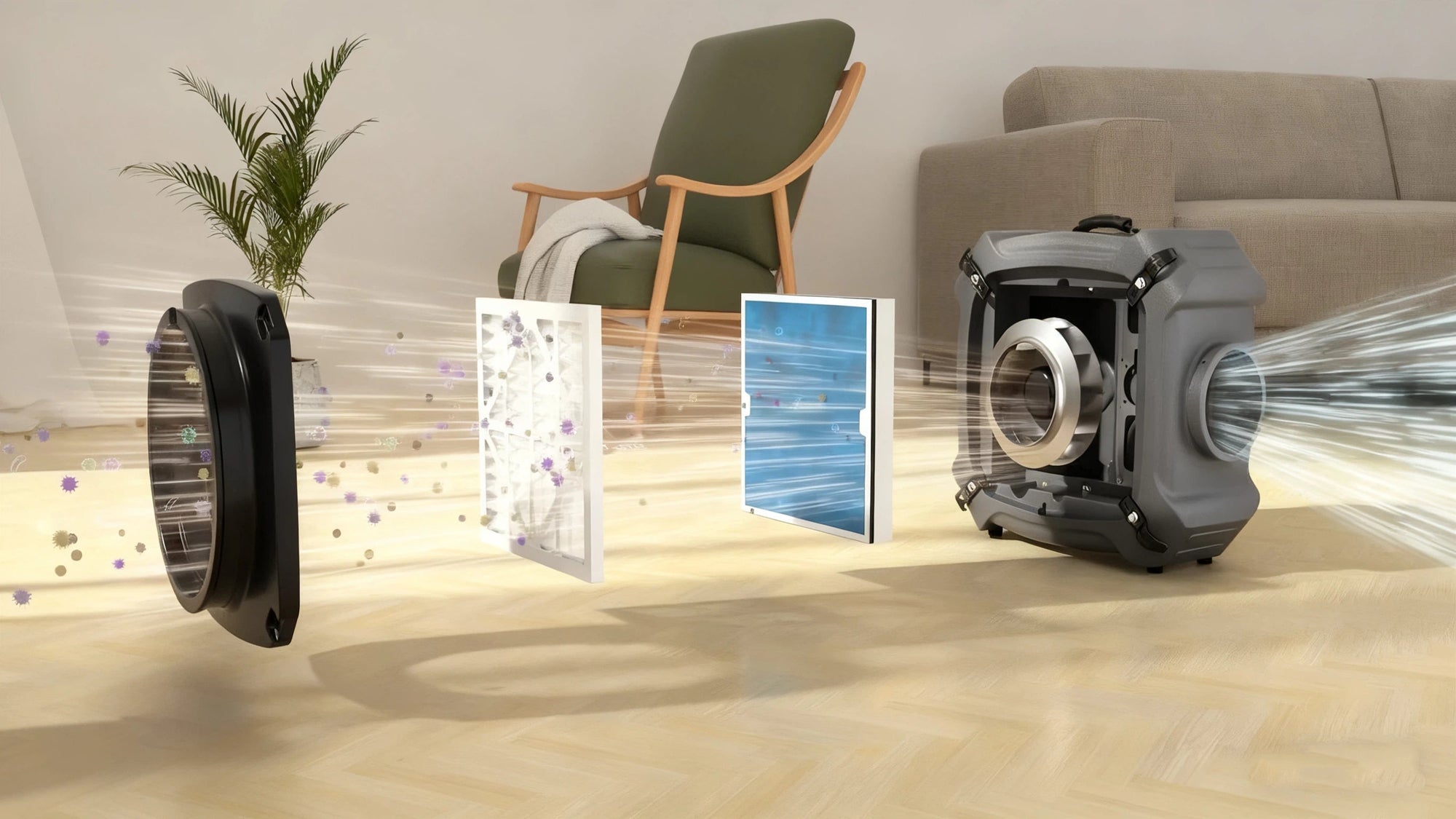
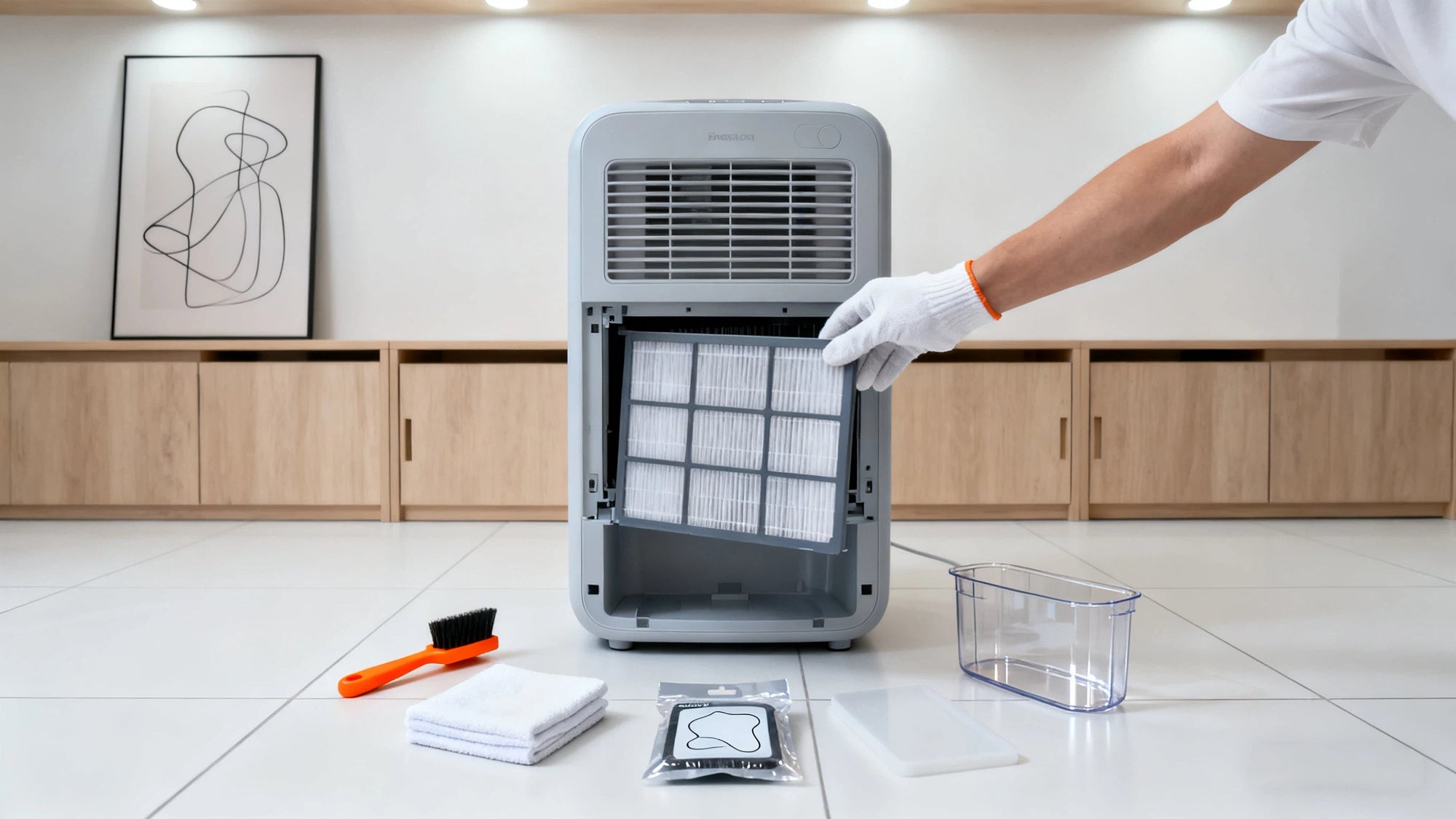
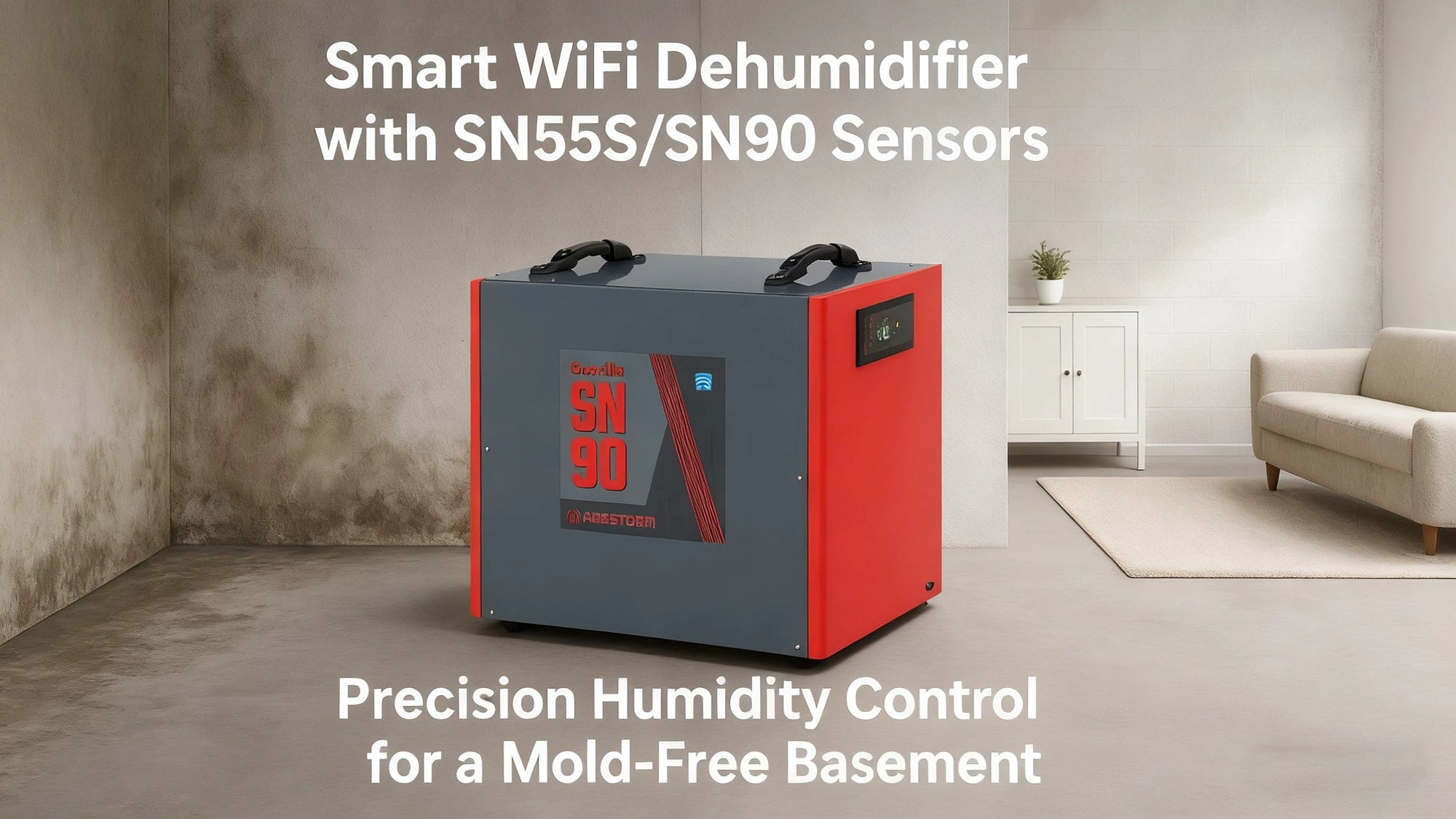
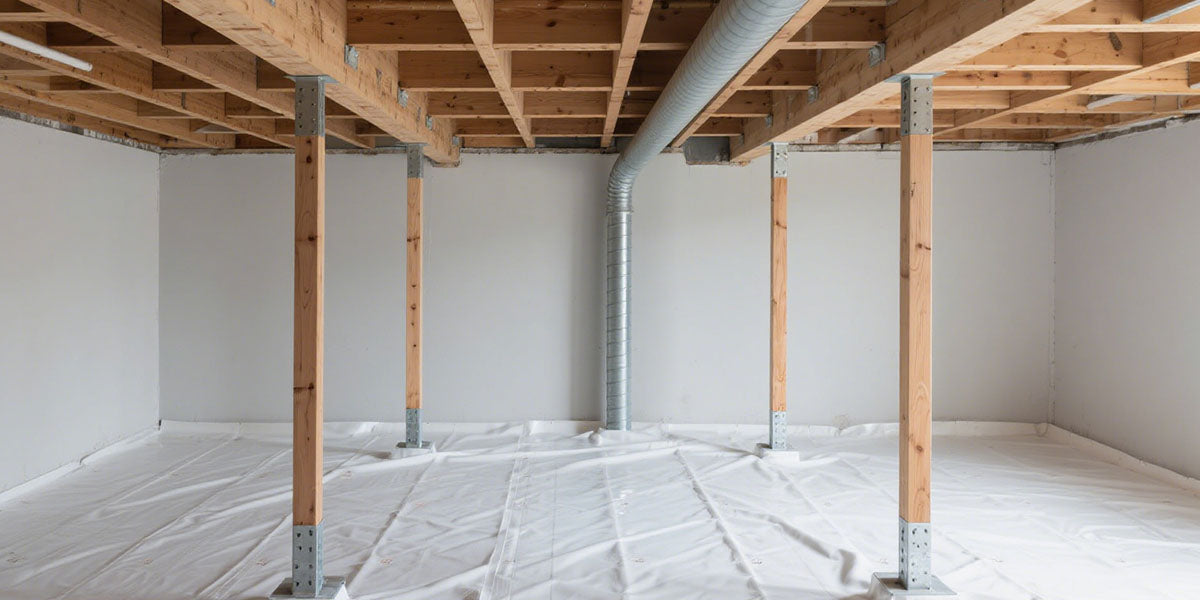
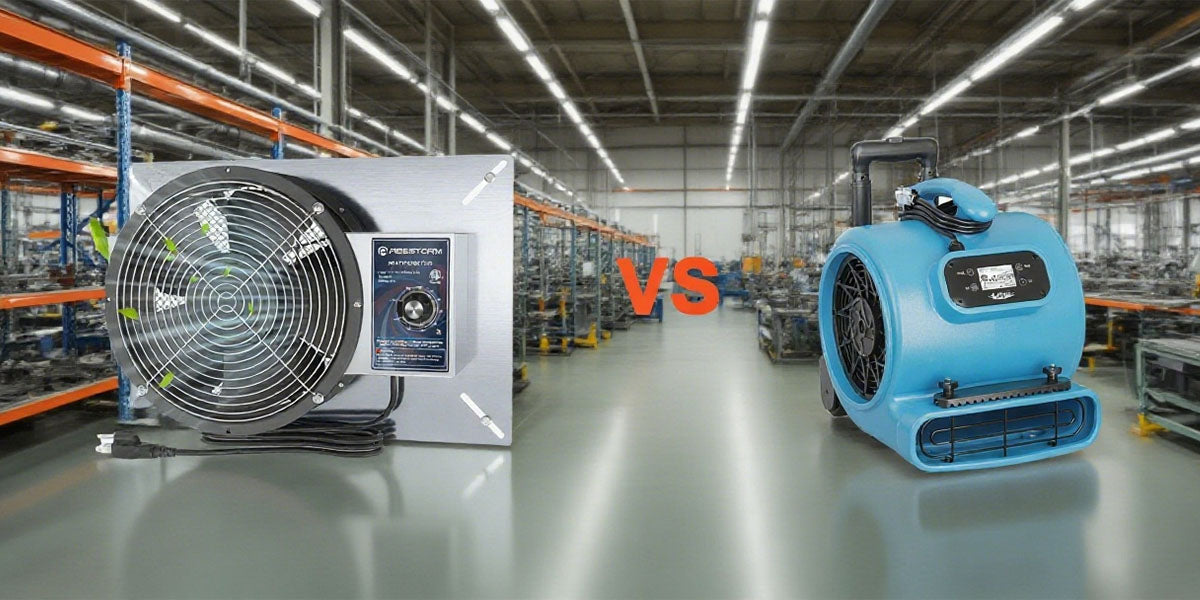
Shop For Dehumidifier
Abestorm 170 PPD 2,100 Sq.Ft Commercial Dehumidifier with Pump and Drain Hose | Hurricane 800
Abestorm 180 PPD 2,300 Sq.Ft Commercial Dehumidifier with Pump and Drain Hose | Hurricane LGR85
Abestorm 180 PPD 2,300 Sq.Ft Smart WIFI Commercial Dehumidifier with Pump and Drain Hose | Hurricane LGR85-Grey (wifi app not available now)
Abestorm 264 PPD 3,000 Sq.Ft Commercial Dehumidifier with Pump and Drain Hose | Hurricane 125P